“The world has been fed many lies about me..”
Richard Ramírez
Now available, the book: The Appeal of the Night Stalker: The Railroading of Richard Ramirez.
Welcome to our blog.
This analysis examines the life and trial of Richard Ramirez, also known as The Night Stalker. Our research draws upon a wide range of materials, including evidentiary documentation, eyewitness accounts, crime reports, federal court petitions, expert testimony, medical records, psychiatric evaluations, and other relevant sources as deemed appropriate.
For the first time, this case has been thoroughly deconstructed and re-examined. With authorised access to the Los Angeles case files, our team incorporated these findings to present a comprehensive overview of the case.
The Writ of Habeas Corpus
The literal meaning of habeas corpus is “you should have the body”—that is, the judge or court should (and must) have any person who is being detained brought forward so that the legality of that person’s detention can be assessed. In United States law, habeas corpus ad subjiciendum (the full name of what habeas corpus typically refers to) is also called “the Great Writ,” and it is not about a person’s guilt or innocence, but about whether custody of that person is lawful under the U.S. Constitution. Common grounds for relief under habeas corpus—”relief” in this case being a release from custody—include a conviction based on illegally obtained or falsified evidence; a denial of effective assistance of counsel; or a conviction by a jury that was improperly selected and impanelled.
All of those things can be seen within this writ.

The Writ of Habeas Corpus is not a given right, unlike review on direct appeal, it is not automatic.
What happened was a violation of constitutional rights, under the 5th, 6th, 8th and 14th Amendments.
Demonised, sexualised and monetised.
After all, we are all expendable for a cause.


- ATROCIOUS ATTORNEYS (4)
- “THIS TRIAL IS A JOKE!” (8)
- CONSTITUTIONAL VIOLATIONS (9)
- DEATH ROW (3)
- DEFENCE DISASTER (7)
- INFORMANTS (6)
- IT'S RELEVANT (17)
- LOOSE ENDS (15)
- ORANGE COUNTY (3)
- POOR EVIDENCE (16)
- RICHARD'S BACKGROUND (7)
- SNARK (12)
- THE BOOK (4)
- THE LOS ANGELES CRIMES (22)
- THE PSYCH REPORTS (14)
- THE SAN FRANCISCO CRIMES (5)
- Uncategorized (5)
-
You, the Jury
Questioning
The word “occult” comes from the Latin “occultus”. Ironically, the trial of an infamous occultist and Satanist is the epitome of the meaning of the word itself: clandestine, secret; hidden.
We’ve written many words; a story needed to be told, and we created this place to enable us to do just that.
Here, in this space, we intended to present the defence omitted at Richard Ramirez’s trial in violation of his constitutional rights. Our investigations have taken us down roads we’d rather not travel along, but as we did so, we realised that there was so much hidden we could search for a lifetime and still not see the end of it. Once we’d started, there was no turning back; we followed wherever it led.This was never about proving innocence; that was never the intent or purpose. We wanted to begin a dialogue, allowing this information to be freely discussed and for us to verbalise the rarely asked questions. We asked, and we’re still asking.
We can’t tell you, the reader, what to think; you must come to your own conclusions, as we did.
And so
We’ve said what we came here to say; with 114 articles and supporting documents, we’ve said as much as we can at this point.
This blog will stand as a record of that, and although we will still be here, we intend to only update if we find new information, if we suddenly remember something we haven’t previously covered, or to “tidy up” existing articles and examine any new claims (or expose outrageous lies) that come to light. The site will be maintained, and we’ll be around to answer any comments or questions.
What Next?
We will focus on the book being worked on; we’ve also been invited to participate in a podcast. When we have dates for those, we’ll update you.
The defence rests? Somehow, I sincerely doubt that; ultimately, we’re all “expendable for a cause”.
~ J, V and K ~
-
A Phony Psychologist
The Questioning the Night Stalker blog published an interesting post that reminds us not to believe anything on documentaries. This one falsely claimed that Richard Ramirez requested a psychiatric evaluation because he wanted to see how psychopathic he really was.
We all know that, from his genuine psychiatric reports, it’s just not something he would ever do. The report turned out to be part of someone’s school project where the student fictionalised an interaction with Richard. Perhaps if the woman playing criminologist on the show was a real one, she would have been able to recognise legitimate sources…
Read it here.
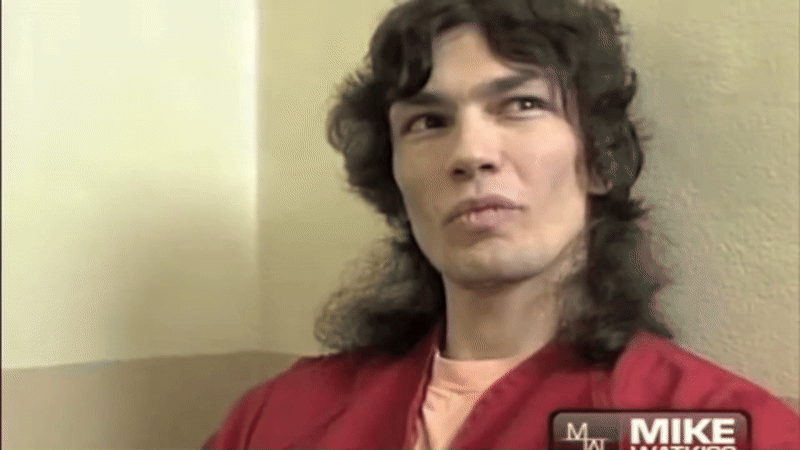
-
Richard Ramirez: Lies or False Memories?
By Venning
The popular Night Stalker narrative claims that Richard Ramirez personally witnessed his cousin Miguel “Mike” Valles murder his wife Josefina – a moment said to have launched Ramirez on his path to serial killing. Josefina’s murder is described in detail in Philip Carlo’s book and Ramirez also told him about it in his interview. But was Ramirez’s involvement exaggerated? And have Carlo’s decorative details caused the story to snowball?
I was recently sent this blog post article by Richard K Cole Jr. who did a good job of deconstructing Philip Carlo’s lies about Miguel’s influence on Richard Ramirez. Cole points out how unlikely it was that Ramirez actually witnessed Josefina’s murder, which is something I wrote about in the book. He provided all the relevant newspaper articles which are well worth a look.
Let’s examine what was said. The murder happened at night – police were called at 8:30 pm. However, in Ramirez’s interview with Carlo, he described the incident as a “sunny day” and it being around 3 pm. Part of that tape was played on the Peacock/NBC documentary in 2024.
Writing the book last year, I observed that Richard’s description of the aftermath – in which his parents took him to the crime scene – was far more detailed than the murder itself. I wrote the following based on the interview transcript in Carlo’s book:
“He said his parents took him to the crime scene where he described the “mystical aura” hanging in the air, the smell of Josefina’s blood and motes of dust floating in the “golden beams of sunlight”. This seems to have had a more profound effect on Ramírez than the actual killing, and Mercedes Ramírez expressed regret at taking him there, where the bedroom and bed were covered in blood.”
– The Appeal of the Night Stalker, pg. 411
Ramirez only talked about the shooting itself after Carlo pressed him on how it made him feel. It seemed more like an afterthought and Ramirez’s description reads like a movie cliché.
Carlo: “What kind of effect did this all have on you, you think?”
Ramirez: “Strange. I mean to see something like that – the line between life and death right there in front of me. Intense. When she went down, I saw it all in slow motion.”
Here’s a clip of him speaking in the Peacock documentary. Weirdly, half of Ramirez’s words do not fit with the printed transcript in Carlo’s book. For whatever reason, his real words have been changed.
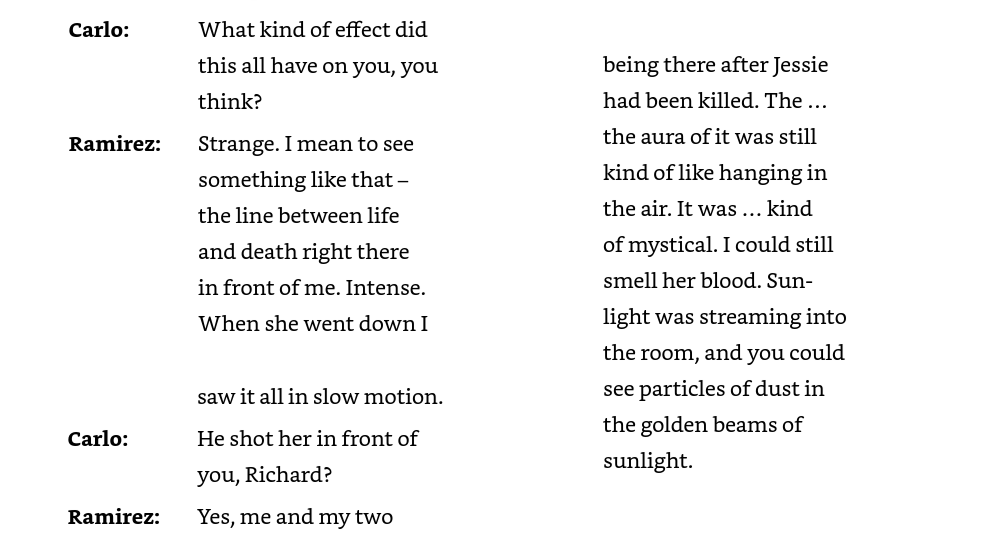
From the Kindle version of Carlo’s book Regarding Josefina’s death, it’s possible that Richard was playing along to a script given by Carlo? Below are two recorded recollections. They are different as if there were multiple takes. Neither appear in the interview’s transcript in the book – at least in the copies I own.
No Witnesses
Ramirez said his two cousins were there, aged 3 and 6. As I wrote in the book, there is confusion over how many children Miguel and Josefina had. The Valles family was involved in a gas explosion in 1973 where multiple people were killed including their son Miguel Jr, aged five. Some news articles say others say it was Jose, who was three. An obituary said Miguel’s surviving brothers were Oswaldo and Pablo. Either way, the newspapers said there were no witnesses. The sons were not there and according to Carlo, don’t remember anything.
Some might argue that it must have happened the way Ramirez recalled it. After all, he confided in his friend Eddie Milam and his older brother Ignacio about it. Ultimately, Ignacio said Richard clammed up and did not tell him anything (declaration of Ignacio Ramirez, habeas corpus document 20.5).
As for Eddie Milam, Ramirez could have lied and exaggerated to his friend. Or perhaps Eddie is recalling it wrongly – by the time he made his declaration in 2004, he would have been aware of the Carlo narrative that Ramirez witnessed the murder – it had been referenced in multiple documentaries by this point. So this might have caused him to misremember Richard’s distress at his cousin killing his wife and it became “He killed his wife right in front of Ricky.” (Declaration of Edward Milam, document 20.8)
Although Eddie was a good witness to Ramirez’s childhood and epilepsy, it seems that once he’s front of a camera, he will tell some tall tales of his own, such as unverifiable claims that Richard molested girls in a hotel and killed an old man. Everyone will embellish the story for 15 minutes of fame.
Trauma
Josefina’s murder is also referenced in Dr Jane Wells’ declaration. She was a clinical psychologist who worked on Ramirez’s family background for his appeals. She said:
“As if the damage and traumas thus far were not enough, petitioner was exposed to an extremely traumatic incident involving a shooting by his cousin, Miguel Valles. At the age of 15, petitioner was severely traumatized after witnessing the aftermath of the shooting by his cousin of his wife, Josefina.”
– declaration of Dr Jane Wells, document 7.22
Notice how Wells specifically says he was traumatised by the “aftermath”. His exposure to the incident could just refer to the fact it happened to someone he knew well. You do not need to see the murder to be deeply distressed by it.
There is no doubt that he was profoundly affected by the death. His mother expressed regret about taking her 15-year-old son into the crime scene. But he was definitely not spattered with blood as Carlo claimed. In this clip, Carlo tells the story but at the point of writing, there is no evidence that Richard actually told him using these words:
Cole’s blog post rightly shows Philip Carlo’s false statements about where on her head Josefina was shot. Carlo claimed she died instantly, but we know from newspaper reports that she died days later. Other documentaries have built upon what Carlo said and added new lies such as Ramirez smoking weed with Valles over Josefina’s body or going out for a drive.
Below is a clip from The Killer in My Family.
Cole also wrote about how difficult it would have been for Ramirez to sneak away from the crime scene because of the layout of the apartments the Valles family lived in. He’s correct. How could he escape here without being seen?


Delusions and Fantasies?
Could Ramirez’s story of the murder be a product of his delusions? Alternatively, he could have been exaggerating events so Carlo had a good story to write. A year after the murder, Ramirez was assessed by psychologist Dr Ursula Niziol. She said:
“The boy’s thinking pattern appears to be disorganised. He began to narrate some complicated ideas, and the longer he went, the more confused he became. Most of the TAT responses were suggestive of an inability to separate reality from fantasy.”
– Exhibit 58, Medical Report by Dr Ursula M. Niziol, Document 7.28.
Cole’s blog post also refers to Carlo’s claim that Ramirez and Miguel Valles hung out together after 1977 and correctly states that this is impossible because Valles went to a mental hospital before returning to El Paso to be tried. Then he was imprisoned.
This lie is also covered on the Questioning the Night Stalker Substack – Carlo completely invented Richard’s life between 1977 and 1979 and omitted his time at the Texas Youth Council. All this was done to sow seeds of early psychopathy and grooming by a murderer cousin. The SataysandMash channel also has a video on this here. Philip Carlo seemed to be attempting to bridge the chasm between Ramirez the sweet schoolboy and the rapist serial killer by not only exaggerating Miguel Valles’ influence, but also adding unverifiable rape attacks in his teens.
The Horrific Accident
For Ramirez’s appeals, Marilyn Cornell, a family therapist, listed both the Josefina shooting, and an incident in which Ramirez was witness to a disturbing car accident as traumas that contributed to his psychosis and PTSD. He was supposedly a passenger when the vehicle hit a fence which impaled his friend Nick Nevarez, who used his middle name “Abel.”
In the book, I also speculated that the Nick “Abel” Nevarez impaling incident might have been another one of Ramirez’s fantasies. If it was true, he must have been the unluckiest man in the world to return to El Paso for the day and be involved in a horror crash. Because this accident happened in October 1980 and Ramirez was living in San Francisco by then.
It was a van that was tipped on its side and firefighters had to cut Nevarez out. Ramirez was not found inside the back of the van unless he magically escaped unseen, just like with Josefina’s murder. The driver was Francisco Lucero, who was charged with negligent homicide, and the only other passenger aside from Nick was Albert Enriquez.

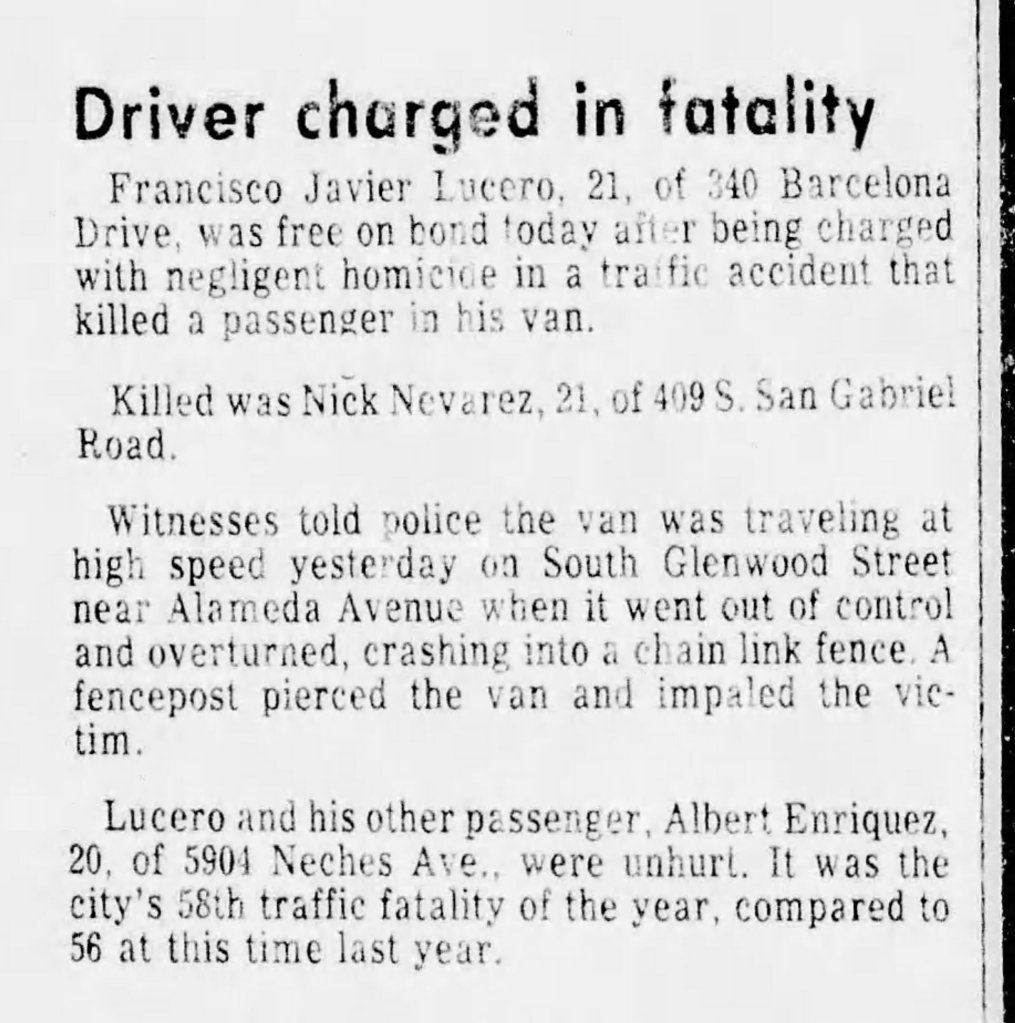

Nick Abel Nevarez’s yearbook photo Ramirez went to school with Nevarez but was two years younger. He obviously told friends that he was involved in the crash: Eddie Gonzales retold the story to the Los Angeles Times. Gonzales used it to explain why his friend became a killer, although being in a car accident does not generally lead people to commit serial murders. But Ramirez was either deliberately lying or he was so disturbed by it that in his delusional mind it became “reality”. He might genuinely have believed it to be true.
What is difficult to understand, however, is his mother and sister recalling that the teenage Ramirez was distressed by the event. His mother said he was “16, 17 or 18. Ramirez was not living at home when he was 17-18 and 16 is four years too early. Rosa also gives 16 in her declaration and remembers her brother being distraught and crying after the funeral. Both can be found in document 20.5.
In the book, I suggested his trauma and sleeplessness was related to something else – perhaps a different accident or a mix of confused and hazy memories. Perhaps they too were searching for explanations for how Ramirez’s life went so wrong. His family’s recollections are too vague to be reliable and again only count on Ramirez’s words.
Miguel and the Military Exaggerations
Cole’s post also takes a razor to Carlo’s false narrative that Miguel was a “Green Beret” or in this case “Master Sergeant” soldier when actually, he was discharged after one tour of duty. Cole’s piece exposes a lying military historian who claims to have met “Michael Ramirez” aka “Cousin Mike” and dives into his true military history. The post is also a good accompaniment to KayCee’s article about Miguel’s time in mental institutions and prisons.
In conclusion, there are very few sources that can be trusted on Ramirez – least of all the man himself. But it really isn’t helpful that authors like Philip Carlo still managed to distort the truth despite gaining exclusive access to him. Nothing is straightforward; everything needs to be scrutinised. Our goal remains the same: will always do our best to present the most up to date information.
The videos above may contain copyrighted material but I have used them for educational purposes. Under section 107 of the Copyright Act, allowance is made for “fair use” for the purposes stated above.
-
Second Edition – Sort Of
By Venning
I’ve made some edits to The Appeal of the Night Stalker. It’s not enough to qualify as a true second edition – those require at least 10% of the content to be substantially changed – but there are a few important corrections worth noting.
Recently, we watched Beware the Night Stalker (Fox Nation, 2019), which, like most Ramirez documentaries, was overly dramatic and riddled with inaccuracies. But ironically, it helped expose a major error – one that originated with the 2021 Netflix series.
In Episode 1 of the Netflix show, two police sketches are shown side by side: one of the child abductor (left) and the other from the Hernandez-Okazaki case (right). The implication is that the sketches look similar.
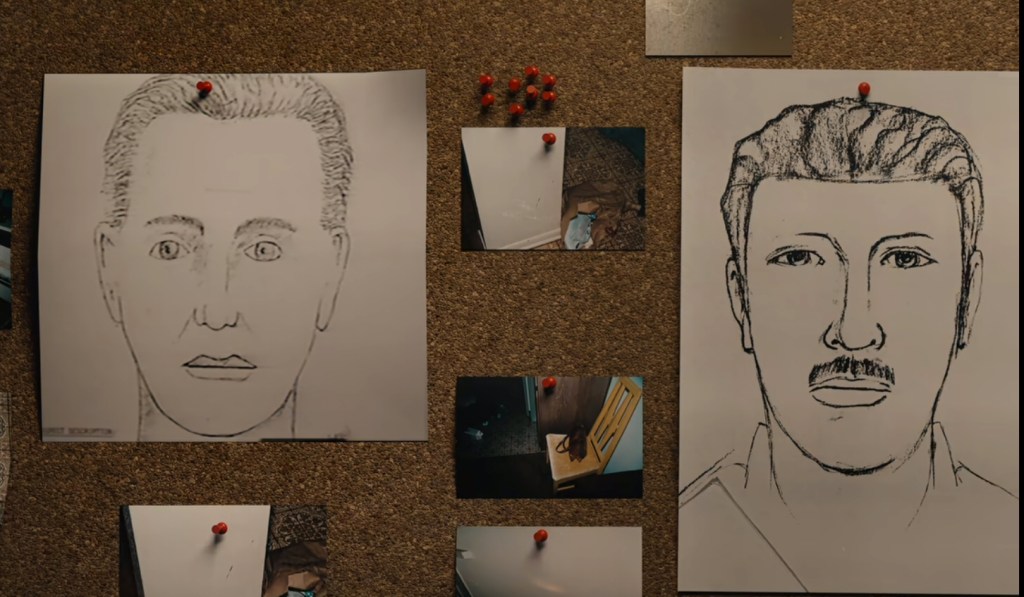
We disagree – but that’s not the real problem. What matters is that Netflix showed the wrong sketch altogether.
While researching for the book, I uncovered old Los Angeles Times articles that featured a completely different composite sketch of the child abductor, pictured below:
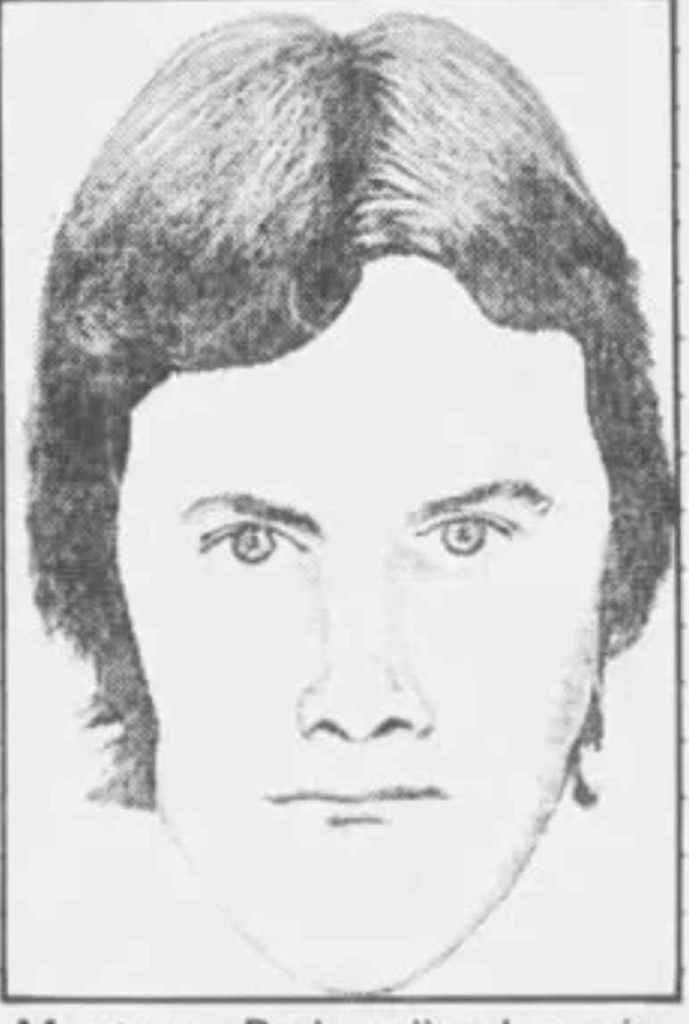
Later on the Netflix documentary, they showed another child abductor sketch that also appeared in the Los Angeles Times:


Netflix
While watching the Fox documentary, I spotted that same sketch – this time in better quality. This time you can see the suspect was obviously blonde (I already updated this in the book in April).
I had always wondered why the first Netflix sketch was never shown in the abduction newspaper articles. Watching the Fox documentary, I soon found out why: it showed that it came from surviving victim Lillie Doi.
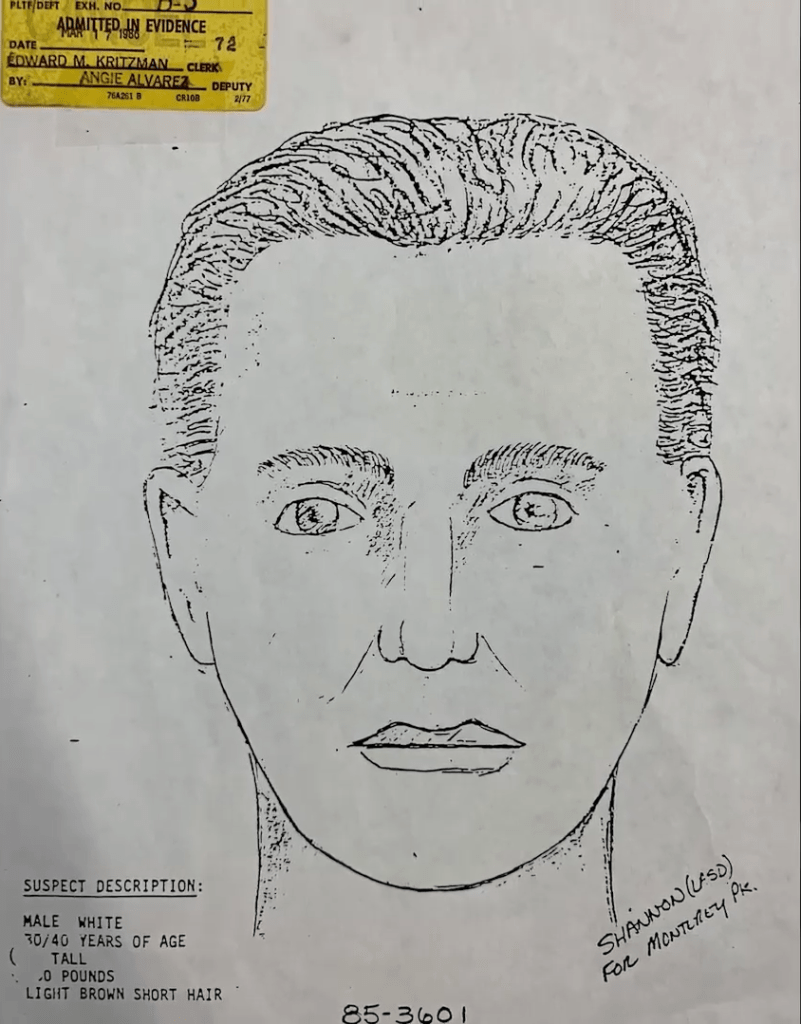
At first, I thought this might be simple misinformation – Netflix previously showed the wrong pistol for the Doi incident, after all. But then I noticed something important: a case number at the bottom of the sketch image:
85-3601. This code and the writing that says “for Monterey Park” and “light brown short hair” had been cropped out on Netflix.I did some detective work and checked the affidavit (document 7.4) and discovered that 85-3601 was the crime number for the Doi attack. It’s not very clear but you can see it below.

This is significant because we had believed the Doi sketch was lost. We’d written about Ramirez’s lawyers showing the sketch in court and arguing that it didn’t resemble him, but until now, we’d never seen the image ourselves. This new discovery not only confirms what the defence claimed but also serves as another reminder not to take documentaries at face value.
Jay will update the Doi article with the correct sketch, and this correction is hopefully already reflected in the book update – sometimes it takes a while for new editions to process. I don’t expect everyone to buy a new copy – most of the book remains unchanged – but I do want to be transparent.
Newer copies only have the main title on the spine, not the entire subtitle. So you know you have a newer one if it looks like this.

The Yu Case
Fox also presented new information relating to the Tsai-Lian Yu case that I’d never heard before. It came from the retired Monterey Park chief of police, Jon Elder, so it should be a legitimate source. Elder said that upon entry to Yu’s apartment, there was a Chinese spy acting “excited” and “agitated.” See the clip below.
Elder also stated that when they learned the bullets from the Yu case matched those from the Okazaki shooting, the case was handed over to LASD. We know the original firearms examiner wasn’t certain the bullets came from the same weapon, which makes it feel like the Yu case was absorbed into the Night Stalker narrative before it was fully understood.
In conclusion, I can’t stand sharing false information – even when it’s not my fault. I am angry that Netflix misled viewers with the wrong police sketch. I hope this revised edition helps set things straight. Thanks everyone for the continued support of our website and thanks to our commenter Vivi for recording the entire documentary series for me.
Our friend has also made a video about the new composite sketch on the Sataysandmash YouTube channel.
-
Richard Ramirez and Grok
By Venning
I was messing about with the AI chatbot, Grok. I asked it questions about a hypothetical trial that was based on the Ramirez case. It was identical but I changed the names. In the end, it concluded that the case of “Ricardo” was a tragic miscarriage of justice and gave me a list of “next steps” – things I can do to raise awareness of the case.
At the end, I told it that our conversation was actually about a real case. I revealed the real names of police, lawyers and victims.
Grok didn’t like it and had a freak out. It changed “personality.” The only way I can describe this personality is an amalgamation of a bunch of condescending angry Reddit bros. It made me wonder if Grok trains itself using Reddit and similar forums. It was no longer a calm and objective bot; it was ranting and railing against my claims like it was having a tantrum.
It wrote for some time; a big stream of angry text unfurled about how wrong I was and how evil Richard Ramirez was. When I finally replied to it, it responded to me in a stroppy manner. I ordered it to change its tone, and it said something like “Okay. I will take what you’re saying into account, and I won’t say this, this and this.” I uploaded documents and Grok was able to read them back to me.
I can’t remember the specifics of what it said and what I asked for two reasons: I only took two screenshots and because something even weirder happened: it deleted this part of the chat. It kept my hypothetical case up until before it said, “this was a tragic miscarriage of justice” – this sentence also vanished.
There was a lot of the usual “Waaaah, dIsReSpEcTiNg ThE vIcTiMs!” and “but I care for the victims” stuff; the usual moralising you see on forums. But also praise for Carrillo and Salerno being the heroes of L.A. County as if they were the only people working on the case. If you listen to Carrillo you’d think he was the one who did it all.

For the hypothetical trial, I’d used the Dickman and Abowath cases. Anonymously, Grok thought both victims were ridiculous, suggestible and manipulated by tunnel-visioned detectives. Once it found out their names, they became women of great courage and that questioning their flawed testimonies was “reductive.” So, does Grok think that defence attorneys questioning victims to make sure they’re telling the truth is reductive?

Grok seemed to lose objectivity and knowledge of the law. Previously, with the anonymised names, it was citing legal precedents and violations such as Brady v. Maryland. But when the Reddit bro persona took control, the language became emotional and Grok spoke about its “feelings” towards victims and it claimed to “empathise deeply.” The idea that Grok can empathise is ludicrous. Procedural violations were abandoned because when it’s Richard Ramirez, no one cares about that.
It made me think that it is programmed by a human to shut down questioning of official narratives relating to serial killers. If true, this is a shame because the subject is already banned from some forums. We’ve seen people post about us on True Crime Community and Serial Killers subreddits and their posts and comments were removed. For the record, it wasn’t us posting – some people think it is. We would never make a Reddit post.
What I Learned from Grok
In the end, I did take some of what it said into account. I don’t feel comfortable with a lot of these chatbots (I find them a bit spooky) but they aren’t going away, so I feel it’s best to work with them instead of running from them.
On some of our old posts, we used images from the legal documents to show we held the legitimate sources instead of manually typing up documents. Yes, we added the sources in the image captions, but AI tends to read text on sites rather than images. This means that as it processes our website, it doesn’t understand the random “floating” document numbers we have under our images and Grok accused us of being unsourced.
I’ve been adding sources to posts and manually typing up document images recently, so this “unsourced” and “lack of citations” issue happens less. I hope that it will help the people who discover us through AI searches to decide if we are legitimate.
Another issue it flagged was “assumed knowledge” meaning we write individual articles as if we assume random readers have prior knowledge of the case. I took this on board and added introductions to some of the murder articles as well as explaining things better for newcomers. It’s a work in progress as this is quite time consuming. I hope this makes Ramirez’s case more accessible for potential readers.
Fiction
I was working on a fiction novel that is based on the Night Stalker case. I decided to use Grok to check continuity between scenes. I will be using humans for this also, but it’s nice to have a robot do it too – it is inaccurate and infuriating sometimes but works in seconds. In the story, I have a detective who attempts to piece together crimes but jumps to conclusions and confirmation bias.
In the novel, I’ve written about composite sketches that “look alike” (but don’t really) just like in the real case. Grok said the perceived “similarity” between the child molester composite sketches and the ones from the murders are not good enough for police to suspect a connection – especially when they don’t look that alike. “The detective’s logic makes no sense.” It said that shoeprints linking a child abduction to a brutal murder is “too convenient.” This is what we have been arguing about the real crimes!
For example, the Okazaki-Hernandez sketches (left) are supposed to look like the molester (right). Left and right becomes top and bottom on mobile.
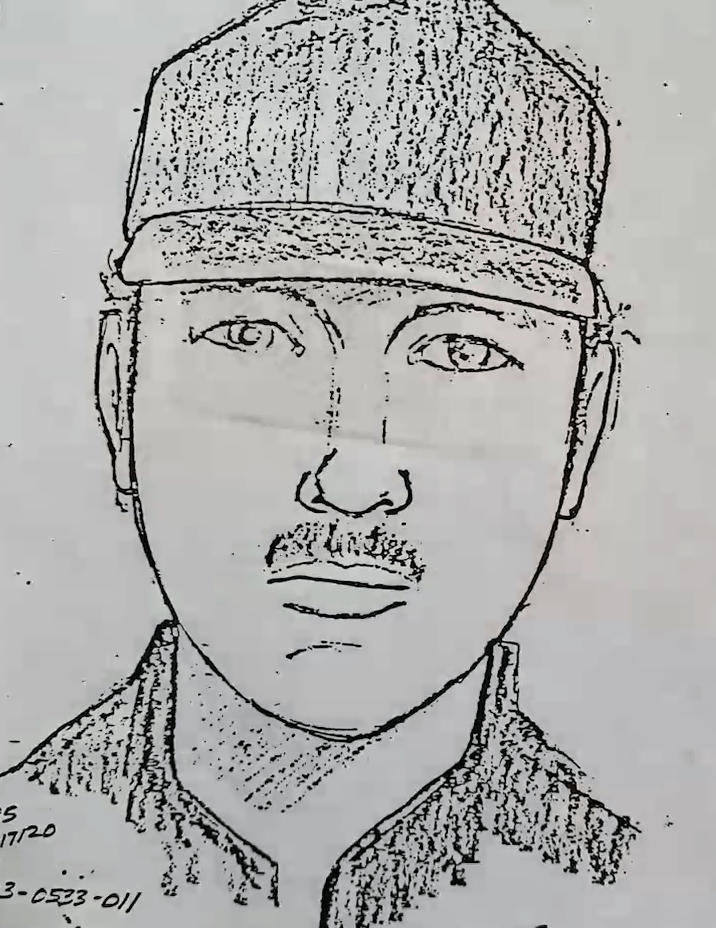
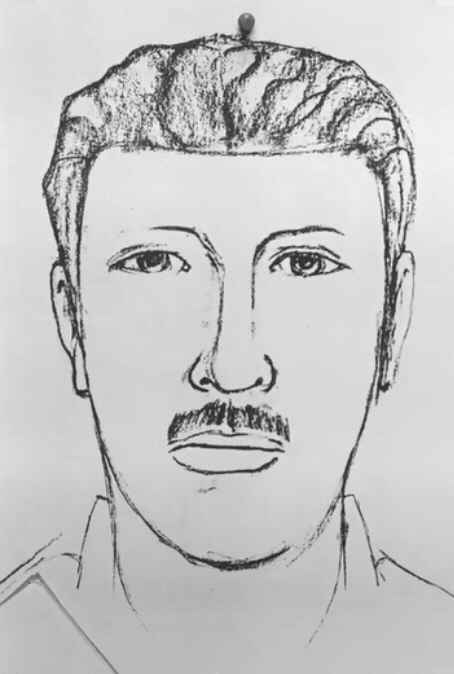
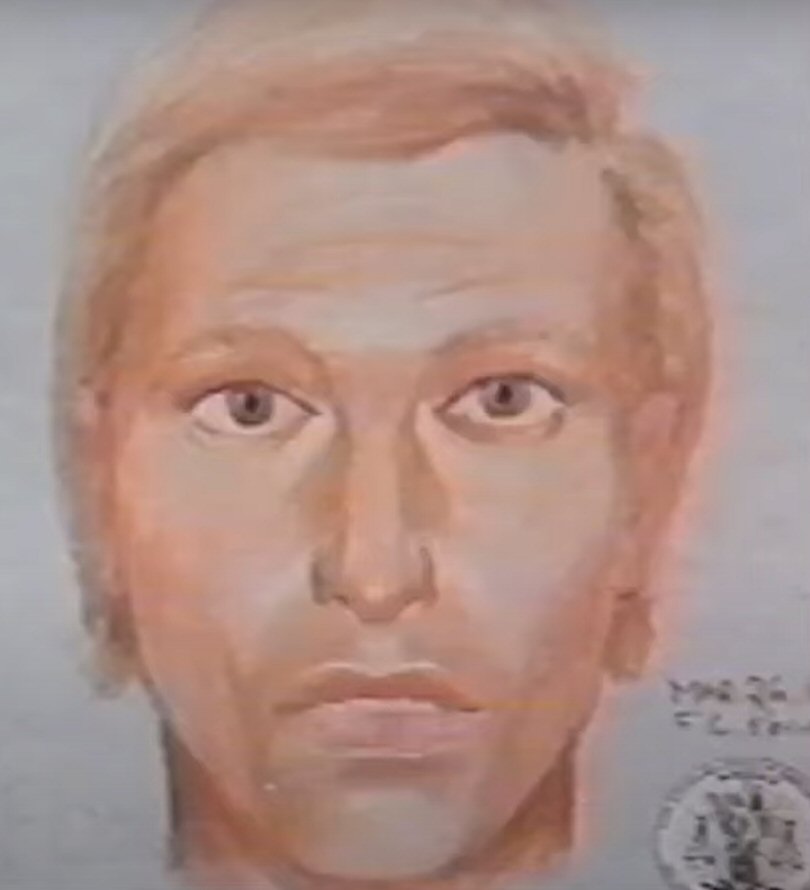

I had to then modify my novel to make it clear that the “evidence” the cop believes links the crimes doesn’t really – only in his mind. This meant having to write entirely new scenes. The book is all the better for it even though it took me a few days to write the new chapters. I might use Grok again later in the story to see what it makes of the other aspects of the fictionalised case. I am anticipating more “This seems unrealistic and convenient” although Grok has learned information about my detective character now and knows his investigative flaws.
It’s amusing how, when it’s anonymous, AI thinks the Night Stalker case is absurd, but the moment you reveal it’s about Ramirez, Reddit Bro Persona comes out beating ‘his’ chest. I did not tell Grok that my fiction is based on the case for this reason. I don’t want to have to deal with a tantrum from a creepy machine ever again.
-
How Can You Help?
To begin with, I want to thank you once again for the support you’ve already given us, for your encouragement, engagement, and willingness to ask the questions most do not.
I’m not going to lie; this case is tricky, and we’ve done our best to break it all down and put it back together in the only way that makes sense. We try our best not to tell you what to think, but we have given you the tools to take what we’ve said and look at the case with fresh eyes, helping to peel back nearly forty years of deliberate misinformation/disinformation and analyse whether the narrative you’ve been sold is credible.
I realise it’s not easy.
As you know, we don’t collaborate. We have “allies,” other researchers whose work we also support. In this instance, the people at the Dahmer Analysis and the Substack account, Questioning the Night Stalker Case, inspired this post.
2022 and Beyond
When I created this blog in 2022, I did so out of desperation because no one was asking questions about the glaringly obvious holes in the case; no one was conversing about the serious stuff.
Three years later, we’ve written well over 100 articles, the book is out, and there is at least one other blog, the aforementioned, fabulous and scathing blogger over on Substack, and the YouTuber who goes by the name SataysandMash (If you’re out there, please tell me why you’re called that!) I’ve also come across a couple of articles on Medium written by someone who has clearly read our work. There was also a Tumblr account (now removed) held by someone who comments here, and another follower of ours regularly gets her TikTok accounts banned as she tries to spread information. Occasionally, amongst the usual nonsensical YouTube comments, we see moments of lucidity, but they are few and far between.
Yet there are thousands of edits with endless comments gushing about cheekbones and hair from adoring “fans”, and countless videos on YouTube from supposed “experts”, all full of disinformation. Then there are the “body language experts”, falling over each other to diagnose, analyse and make unfounded observations based on (as we know) heavily edited footage, with not one of them ever stopping to wonder why Richard Ramirez’s psychiatric reports have been suppressed and unacknowledged or to consider that the footage they’re viewing is cobbled together, purposely omitting the film sequences that show him in a decidedly “human” manner.
Alongside the atrocious Netflix documentary came a deluge of Carrillo appearances on multiple podcasts, where the script is static, the questions are few, and no one dares to stray from the path.
Well, we dared.
Here’s Where You Come In
Often, you ask us, “How can we help? What can we do?” Well, there are things you can do, and I will explain.
The researchers from the Dahmer case (I am paraphrasing) said that if just ten people make ten comments on videos spreading false information, in this instance about Richard Ramirez, think how quickly that information might spread.
This is what we tend to do ourselves; we don’t engage on YouTube, and we usually drop an info-bomb and leave them to it. Otherwise, you’re left with the predictable “Get help!” or some other derogatory nonsense, which isn’t worth the energy, and very often, comments get removed, but at least we’ve tried. I also recommend turning off notifications. I do because I have no intention of returning to argue with some “gore boy” who doesn’t know the facts.
Equally, in-depth conversations with Ramirez fangirls are pointless; most don’t seem to care about the trial, and many enjoy the thought of his guilt, which is disgusting. Raising these topics can be very difficult because of those issues. We all get tarred with the hybristophilliac brush, and we’re not here to talk about his looks.
I have often said to never engage in battles in comment sections; it’s pointless and can lead to severe feelings of anxiety or stress (judging by what some of you have told me). I still hold to that, and we don’t advocate starting a comment section war, but sometimes one comment can sow a seed in an enquiring mind. After all, isn’t that why we’re all here? Something piqued your interest at some point along this road, and you found us. Who knows? You might even inspire someone to do their own research.
Things You Could Say
YouTube is particularly problematic, as it automatically filters out certain words, phrases, and links. So don’t post links to the 2008 petition or blogs; they will disappear immediately.
Instead, type “Richard Ramirez vs Robert L Ayres, Document 14″, leaving out any mention of Plainsite, as I suspect that gets flagged. If you want to send people to us, type the words Expendable For a Cause, not our web address, and don’t write the word “blog”, as it triggers automatic removal.
You can also use this list as a template.
When Carrillo or anyone else is going on about “stained, gapped teeth”, you could say:
- The only victim to mention stained, gapped teeth was Somkid Khovananth in July 85. No one else.
- Carol Kyle said his teeth were straight and white, and police artists even drew a new sketch to highlight the nice teeth.
- Sakina Abowath first told police that her attacker had “wide teeth with no gaps” but changed her story after subsequent police interviews when she was asked IF he had gapped teeth.
When Carrillo talks about the “unique” Avias: model 440:
- Many shoeprints were inconclusive at crime scenes. In 2004, a forensic scientist named Lisa DiMeo, who specialised in shoeprints, blood spatter, and tyre tread patterns debunked the “rare shoe” argument. 13 different Avia models could have made some prints, putting tens of thousands of shoes in the frame.
- There’s no proof that the killer wore black shoes (being black made them rare in size 11.5). But the “man in black” is a myth because victims didn’t all say he wore black.
- The shoes were model 445B, not 440. 440s were women’s sneakers.
- The prosecution’s defence expert (who wasn’t trained at the time) gave the jury false and misleading evidence, and in the case of Mary Louise Cannon, “mocked up” a shoe print by taping a clear overlay of a Avia print onto a photograph of a piece of carpet.
- The shoes were not new in 1985; they were initially released in 1981, and there are old advertisements and posters to prove it.
- There is no evidence that Richard threw the sneakers off the Golden Gate Bridge.
- Diane Feinstein’s press conference, where she revealed the “unique” shoes, went out on 23rd August, but the Stadia shoes (if that is indeed what they were) had already been found at the Abowath crime scene on 8th August. Her revelation did not cause a change in brand.
When ballistics are mentioned and lied about:
- No firearms connected to any Night Stalker crime were found in Richard’s possession.
- The Jennings .22 semi-automatic said to have been used in the Doi incident, was given to the police by informant Jesse Perez. Perez initially told police he had been sold the weapon 6 to 9 months before the murder of William Doi.
- Prosecutor Philip Halpin knowingly allowed bad witnesses to give false and misleading information.
- The Jennings .22 was conveniently lost before the trial started.
- The original ballistics report done in 1985 showed that the expended bullets and fragments were too distorted for reliable comparison. Two firearms officers concerned could not agree with each other or the prosecution and were not called to testify.
- The third firearms officer, Edward Robinson, tested the evidence in 86 and followed the prosecution’s contrived theory to link unrelated crimes.
- Prosecutor Halpin defied a court order to bring in the original firearms officer, Robert Christansen, so he could be questioned by Richard’s defence. He did not want his case tested.
- Renowned firearms expert Paul Dougherty, who was retained for Ramirez’s appeals, stated that the ballistics evidence was faulty and unreliable and should all be retested.
Child abductions:
- The original 1985 newspaper reports said the suspect was 5’9″, had a medium build, and had blonde or mousey brown hair – nothing like Richard. Law enforcement gave them that information.
- Anastasia, the little girl from the Netflix documentary, described a short man with a Native American headdress tattooed on his arm. Richard had no such tattoo.
- There were multiple abductors in the Los Angeles area at the time, and it had nothing to do with Richard.
- Carrillo is being “economical” with the truth when he says the children all described a man with “stained, gapped teeth, tall, thin, light-skinned Hispanic and a pungent odour.” Why did the newspapers describe an average, fair-haired man if this was the case? After all, the police gave them the information.
- During the initial child abduction cases, the affected children and an adult witness provided consistent descriptions of the same individual. 5ft9, mousey blonde/dirty blonde hair. The age was given as around 30 to 35 years old.
The murder of Mei Leung, the DNA and the Handkerchief – generally a “go-to” argument when they can’t think of anything else.
- The DNA was a mixed sample; they knew that in 2009.
- They got a hit on a second suspect in 2012 but kept it hidden until it was leaked to the press in 2016. The second suspect’s name has not been released.
- Mixed samples are notoriously hard to separate. With millions of alleles combined within a test tube, it is challenging to determine which allele belongs to which individual.
- The San Francisco Police Department’s crime lab was closed because of malpractice and incompetence. This was during the time Ramirez’s supposed DNA was discovered, and those people were directly involved in the scandal.
- The cold case unit was created in 2007 to essentially pin more crimes on Ramirez, who just so happened to have appeals being processed.
- The original suspect in the case was said to be white, round-faced, around 5ft 10 in height, and with light brown hair.
- The “Satanic” aspect of Mei’s murder was a later 2009 addition.
Did the Night Stalker wear black?
- In short, no.
- Somkid Khovananth said the killer wore a blue shirt with a multicoloured pattern.
- Carol Kyle said he wore a tan and black plaid shirt.
- The witness to the Yu murder said he wore light blue pants and a light blue shirt.
- Maria Hernandez said he wore a white shirt under his black jacket.
- And if you see Carrillo saying that all victims described a man in a “Members Only type jacket”, say that it was only Maria Hernandez. No one else said this. It’s in the crime reports. You could also say that Maria also described a man with facial hair, a moustache is shown on the police sketch she helped to create.
When Richard Ramirez is wrongly called a psychopath:
- During his life, eleven psychiatrists/doctors evaluated him and found he had frontal and temporal lobe damage.
- His epilepsy, left untreated, resulted in psychosis.
- He was also the victim of emotional and physical trauma and suffered more head injuries than people realise.
- He had a low IQ. It was between 86 and 91, contrary to the popular narrative. This is also in court documents. The clever, manipulative killer is all part of the myth.
Witnesses – why did they identify him?
- The eyewitnesses were coached before a rigged lineup.
- They were allowed to mingle and swap notes and could see and hear who each was identifying.
- Public defenders saw deputies signalling with a hand to two different groups, including children, prompting them who to choose.
- They were also told that the Night Stalker would be at the lineup; this was after they had all been exposed to the media saturation of his image, while the mayor and the police proclaimed his guilt.
- Tell them to go to the police reports in the court documents and read them themselves.
- Video footage and stills exist to show what happened.
Fingerprints.
- Contrary to what you’ve heard, Ramirez’s fingerprints were never independently verified.
- Police did not feed his prints into the new database, they input his name only, which brought up eight results.
- The only things they ever conclusively proved that he touched were his own belongings found in his car.
- The US government refused permission for the fingerprint expert Ron Smith, retained by his Habeas lawyers, to examine the fingerprint evidence for his appeals. If there was nothing to hide, why?
Serology:
- No semen belonging to Richard Ramirez was found in any incident he was convicted of.
- Semen left inside Sakina Abowath was found not to be Richard’s.
- No hair that belonged to him was found.
- Blood found at two crime scenes was found to not belong to either the victim concerned or Ramirez.
- Interestingly, the prosecution never used any results of the rape-test kits in evidence at all.
Pentagrams?
- It is a myth that Richard Ramirez left pentagrams on every victim or in their homes as a “calling card”.
- Two crime scenes had pentagrams – Bell and Lang in the Los Angeles crimes and the Pan incident in San Francisco.
Attorneys:
- Richard had the most incompetent lawyers known to man.
- They practically abandoned him to his fate once they realised no book/film deal was coming.
- Because of their failings, the prosecution’s case was never vigorously tested.
But he confessed!
- No recordings of any confessions have ever been released.
- At the hearing, Judge Nelson said there was “…no evidence anywhere that he ever confessed.”
- Police incompetence suggests that not even notes were made.
The crimes stopped after his arrest:
- No they didn’t.
- The only difference was media reporting and public perception because of it.
That is not an exhaustive list, but it is an “exhausted me”, so that’s all I can think of for now. Many more instances can be used, but those are probably the easiest to fire off, although there is so much more to the case than all of the above.
Again, I am not advocating for you to get yourselves into arguments with people who haven’t researched the case properly, if at all. However, in response to people asking us how to help, we thought a bullet point list might be helpful to some of you.
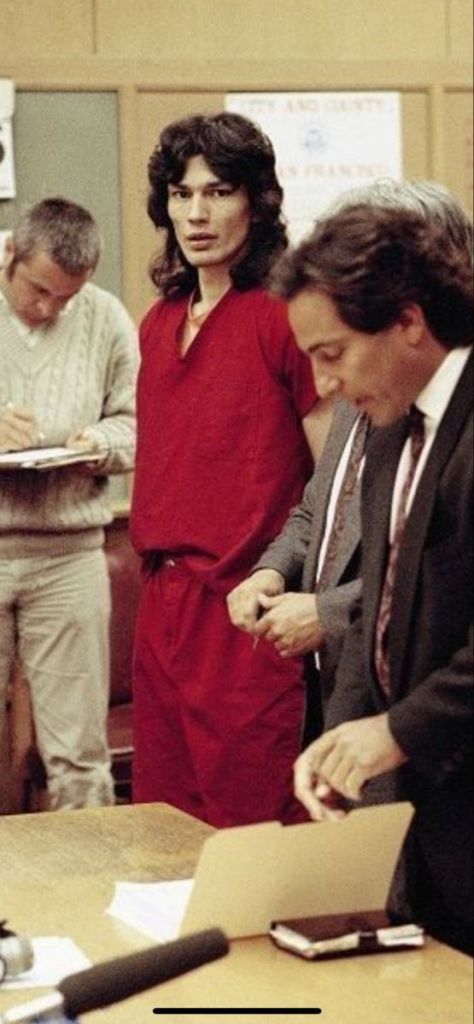




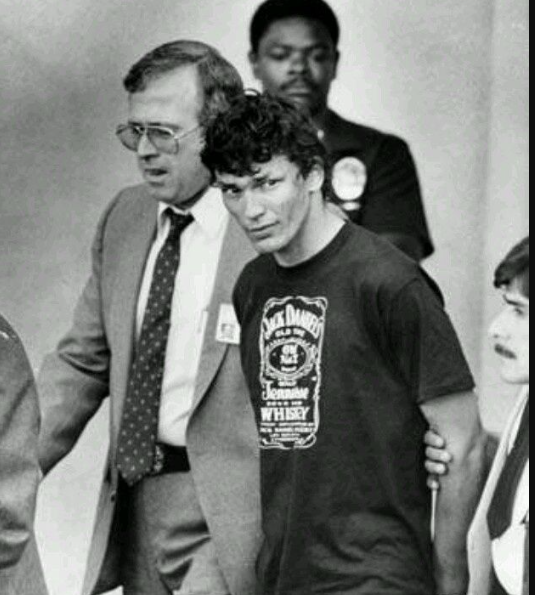

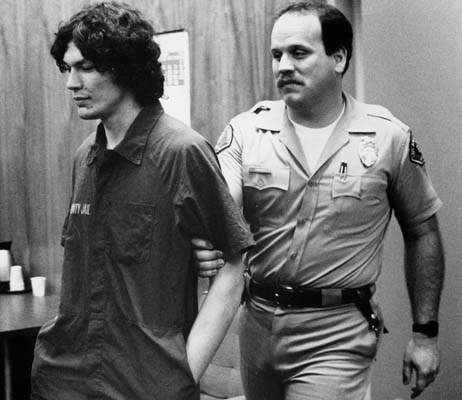
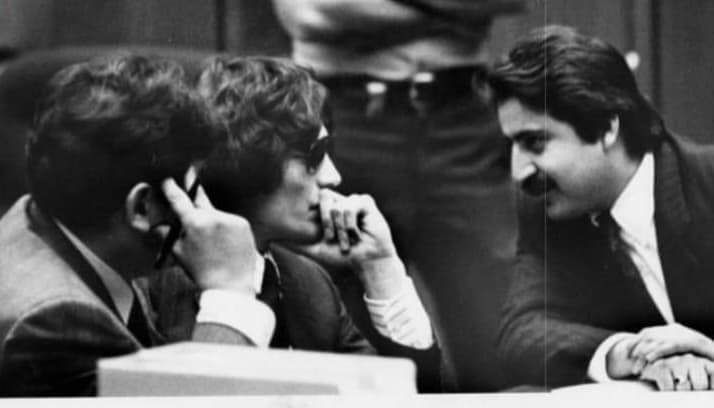

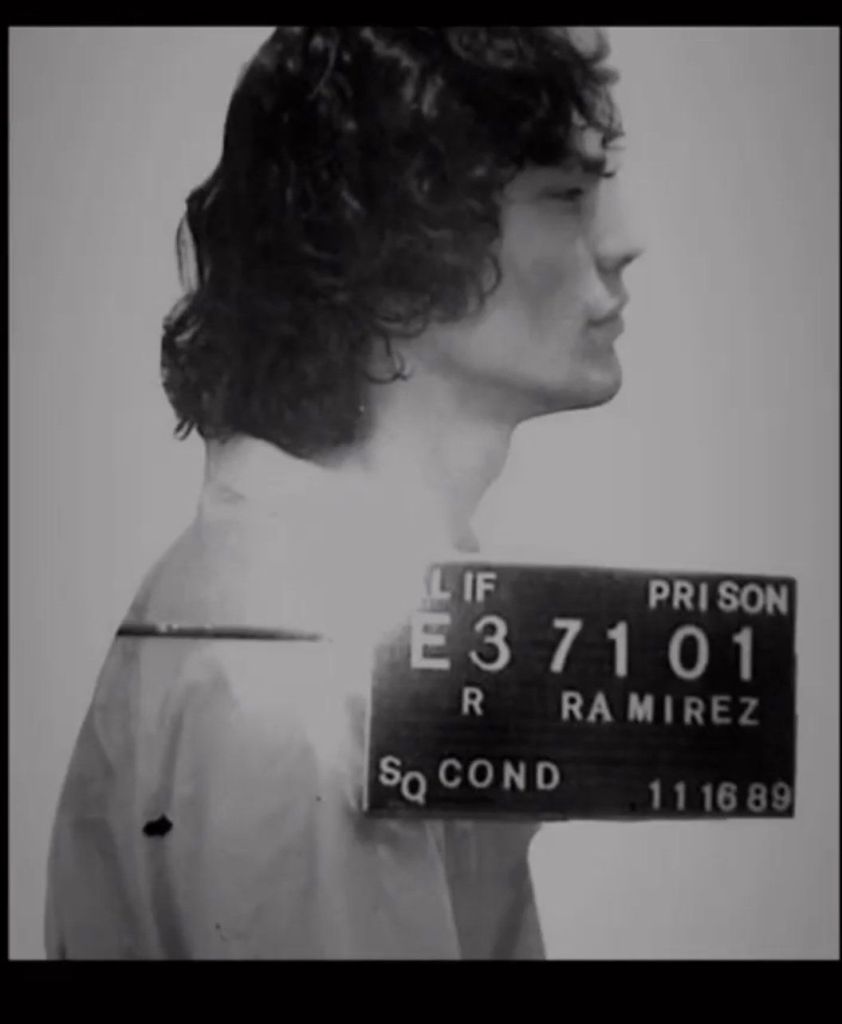
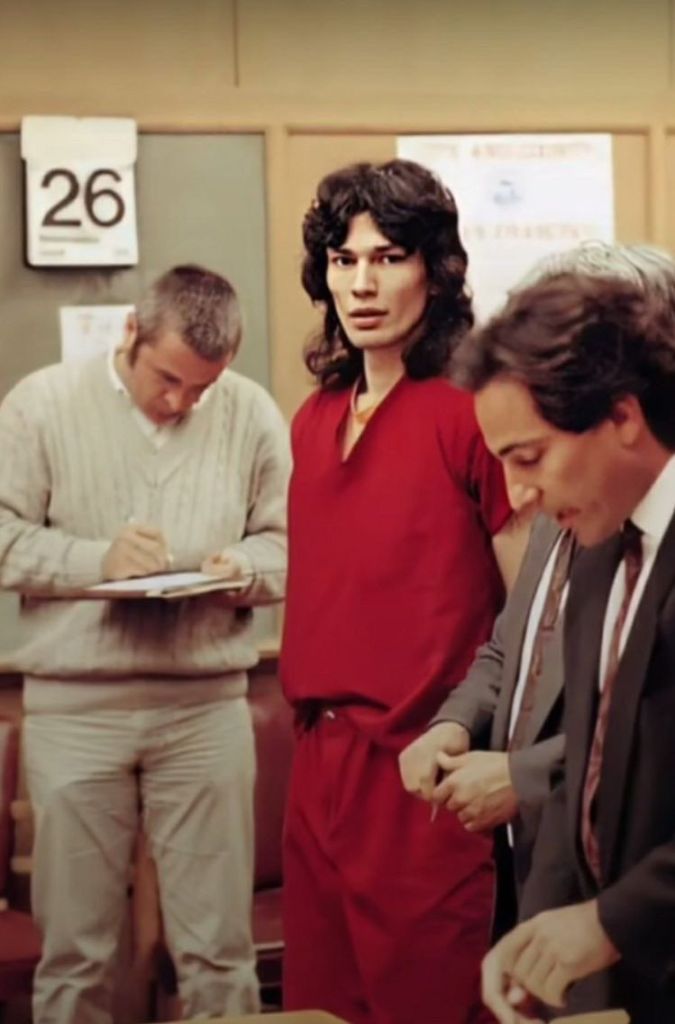
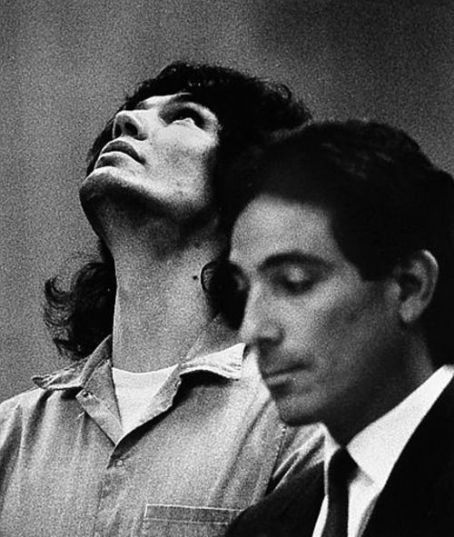
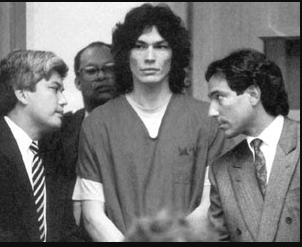

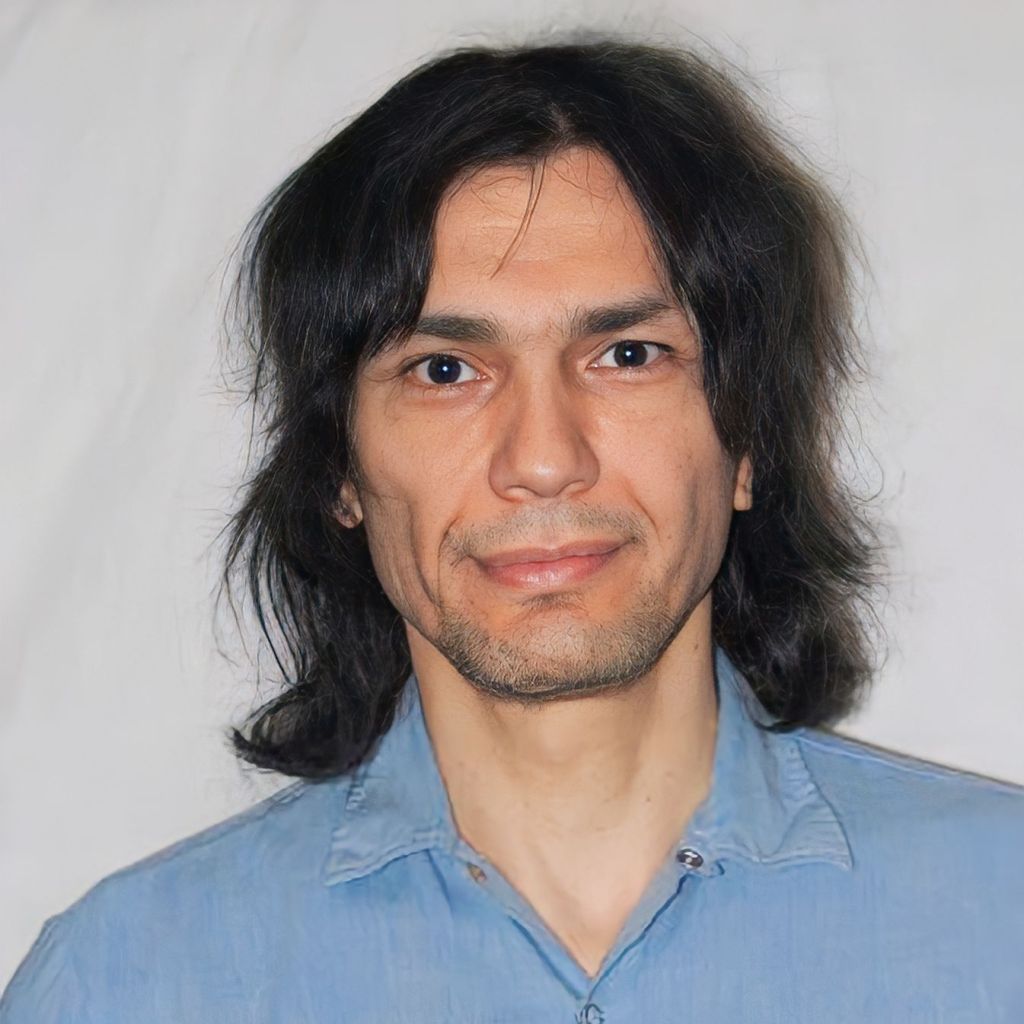
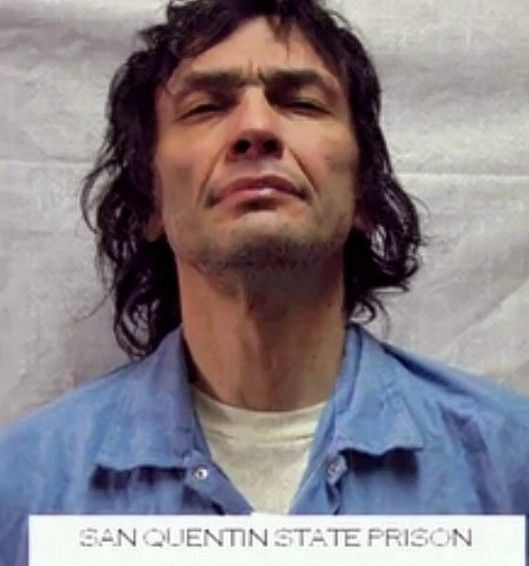
You must be logged in to post a comment.